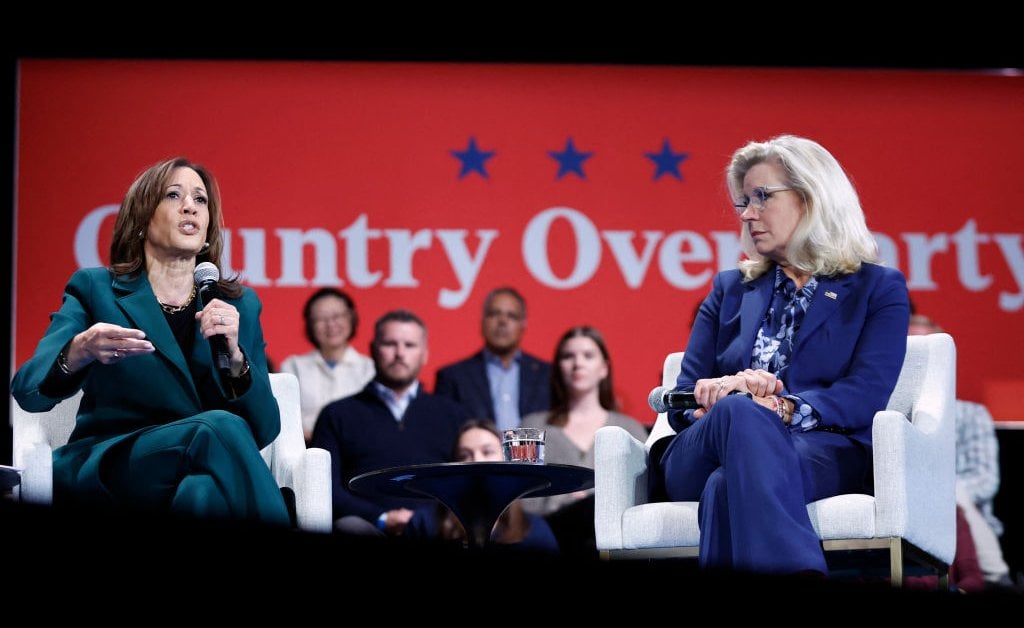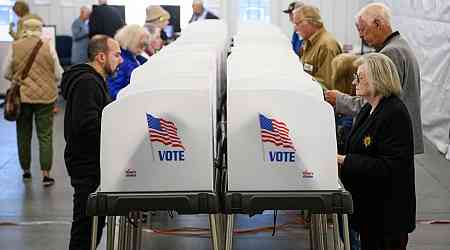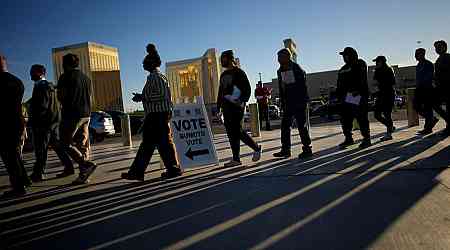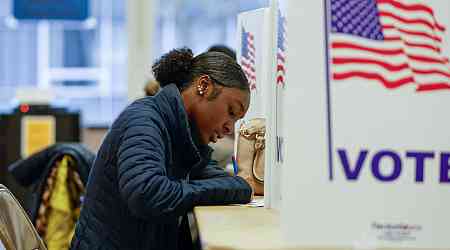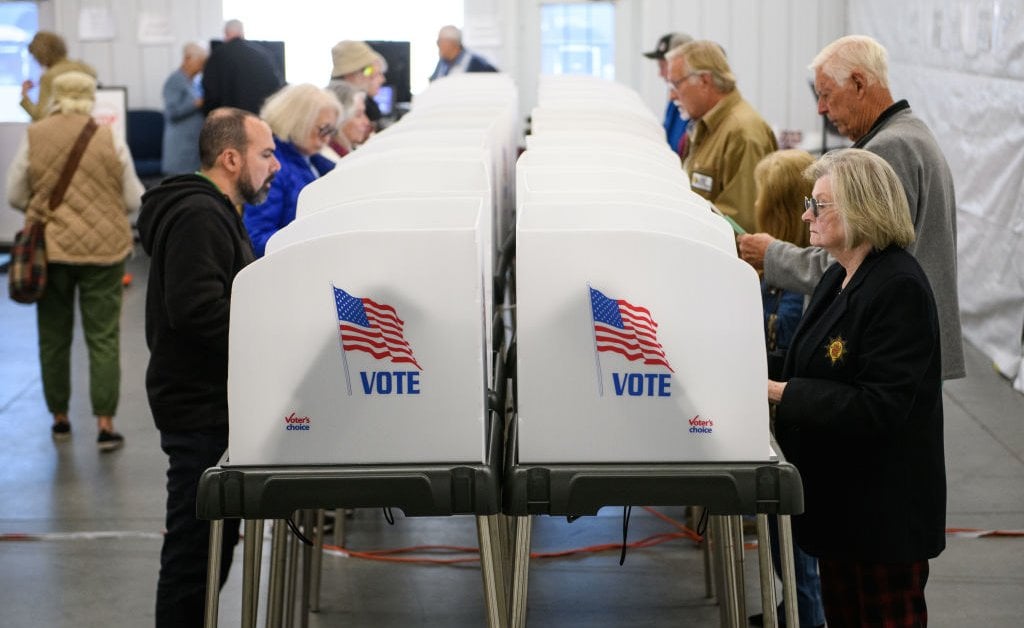
As the presidential election enters the final stretch, Democrats are increasingly nervous about the outcome. Memories of 2016—and Hillary Clinton losing despite having a lead in the polls—make complacency among supporters of Vice President Kamala Harris impossible.
At the same time, the constant drumbeat of conspiracy theories, and wild lies about immigrants and natural disasters, along with Donald Trump’s threat to unleash retribution against his enemies if re-elected, has contributed to a sense of chaos and dread among some citizens.
[time-brightcove not-tgx=”true”]More than one commentator has compared the sense of crisis and fear that pervades America’s fragmented political culture to the situation in Weimar Germany in the years before that democratic government gave way to authoritarianism. Yet—even beyond the inherent risks of a historical comparison that sets any modern political figure up to be compared to Hitler—there is a crucial difference that makes the comparison inexact: Americans today who believe that the country is at risk of a crumbling of democracy are forging a crucial cross-ideological coalition that was missing in Weimar Germany.
After Germany’s defeat in World War I, the Weimar Republic replaced the imperial government of Kaiser Wilhelm II. It represented a seemingly welcome change in both Germany’s political and social order—an effort to establish a democratic parliamentary regime. However, it was hobbled from the beginning.
At the root of the new government’s problems was a myth told by the German high command at the end of World War I—the “Dolchstoss Legend.” When Germany asked for an armistice in November 1918, it was on the ropes. Yet the high command wished to avoid blame from the German people for losing the war. So, it created a myth to explain Germany’s defeat: the government stabbed its people in the back. The military leaders claimed that Germany had actually been winning the war but was betrayed by the new government’s socialists and liberals.
Read More: Tucker Carlson and the Right’s Long Love Affair with Dictators
Even worse, after these “November criminals” surrendered to the Allies, they then supposedly sold out the country at the Versailles Peace Conference, agreeing to territorial losses and crippling reparations payments. Among their concessions: the humiliating “War Guilt Clause,” which forced Germany to accept sole responsibility for WWI.
The big lie of the Dolchstoss Legend was entirely false—even the concessions at Versailles had been reluctant. Yet it undercut the nascent Weimar Republic and made it difficult for the new government, now labeled traitorous by many Germans, to establish its legitimacy.
During the 1920s, the crushing weight of reparations along with polarization led to economic and political instability. For the most part, the government remained in the hands of more centrist politicians, although these parliamentary alliances regularly fell apart as the government was beset with both domestic and international challenges. Among the most serious: the French occupation of German industrial sites when Germany fell behind in its reparation payments, leading to catastrophic inflation in 1923.
It was against this backdrop that Hitler first attempted to seize power in November of that year in the Beer Hall Putsch. While the coup failed, a corrupt judiciary that was openly sympathetic to the political right handed down mild sentences to Hitler and his followers; he spent less than a year in prison.
In the years that followed Hitler’s release from prison, Nazis fanned out across Germany to build up the party’s organization, especially in rural areas and small towns, where people were receptive to their appeal to racism and xenophobia as well as their party’s attacks on Marxists and the urban cultural elite.
When the Great Depression hit in the early 1930s, Hitler and his followers were ready to take advantage of the German people’s despair and to focus their attention on a scapegoat—the political left and the Jews—as support for centrist political parties eroded.
Crucially, there was no unified opposition to the Nazis. Over the course of the 1920s the Social Democrats had regularly allied with centrist parties. By the early 1930s, however, the vote share of those parties was far less than the combined majority they needed to govern. Even worse, the Social Democrats were engaged in bitter infighting with the rapidly growing Communist Party, which made it impossible for the left to hold out against an invigorated and extremist right. The country was so polarized that no viable cross-ideological political coalition was possible, and the political center shrank rapidly as the extreme right and left expanded. Many resigned themselves to the end of a democratic regime that didn’t seem to be working.
Read More: Doomsday and Democracy: Former Trump Aides Warn of Secret Presidential Crisis Powers
Today’s political culture can seem fragmented and chaotic in ways that echo the turmoil of Weimar’s final months. Trump and the GOP warn their side that Democrats want “to destroy our country,” with Trump repeatedly calling Harris a “Marxist, communist, fascist person.” His billionaire ally Elon Musk warned in a podcast interview released Monday that if Trump loses, it will be the “last election” and Trump’s campaign shared it on social media. Meanwhile, those backing Harris and the Democrats point out that Trump has not promised to accept the results of the election, and watch with trepidation as some of his right-wing supporters seem to be preparing for post-election violence.
While comparing any modern political figure to those of this era is fraught, Weimar Germany remains one of modern history’s most infamous examples of the collapse of a democracy and the rise of authoritarianism. Donald Trump’s attitude toward the peaceful transfer of power—demonstrated most notoriously on Jan. 6, 2021, and again on Sunday, when he stated at a rally in Pennsylvania that he “shouldn’t have left” office—and other elements of his platform do raise the specter of systemic collapse. But this close look at the events of the early 1930s suggests the U.S. is much better positioned than Germany was to avoid the slide into authoritarianism for one critical reason.

Americans of the political left, center, and even parts of the right who see an existential threat in a Trump victory have pulled together in a way that parties in the Weimar Republic did not. Former GOP stalwarts like Liz and Dick Cheney and leftists like Vermont Senator Bernie Sanders and New York Representative Alexandria Ocasio-Cortez have all spoken up against Trump and pledged their support to Harris. Republicans for Harris are likewise out in force, muting their policy disagreements for the time being.
Under Weimar, political infighting made it impossible to present a united front against rising authoritarianism. Today, the center right and center left are unified in their efforts to prevent that shift. They may yet fail, but it won’t be because they resigned themselves to defeat.
Christine Adams, a former American Council for Learned Societies and Andrew W. Mellon Foundation fellow at the Newberry Library, is professor of history at St. Mary’s College of Maryland and author of The Creation of the French Royal Mistress with Tracy Adams.
Made by History takes readers beyond the headlines with articles written and edited by professional historians. Learn more about Made by History at TIME here. Opinions expressed do not necessarily reflect the views of TIME editors.


















